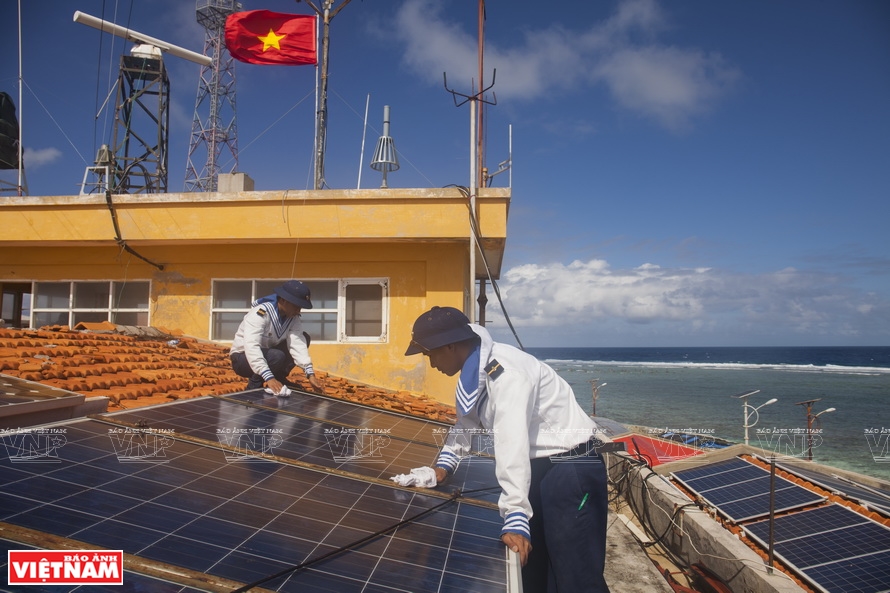Truong Sa island district, Khanh Hoa province where the national grid can not be accessed, has been lit up using the clean energy of wind and solar.
The systems of clean energy on Phan Vinh island (Pearson Reef) contribute significantly to improving the life of soldiers and islanders and protecting the national maritime sovereignty.
On the island of Phan Vinh, soldiers and islanders used diesel engines to generate power for their life and work. However, using diesel generators was quite expensive and it caused environmental and noise pollution. It was very difficult to maintain a stable power source all day. The generators ran only several hours in the evening and in emergencies.

Panoramic view of Phan Vinh island. Photo: Thong Hai / VNP
 Wind turbines installed on Phan Vinh island. Photo: Thong Hai / VNP
Wind turbines installed on Phan Vinh island. Photo: Thong Hai / VNP

Soldiers regularly maintain the solar panels. Photo: Thong Hai / VNP
|
Dealing with the urgent needs, the government in 2009 built two systems using wind and solar power on Phan Vinh island. Now there are more than 300 solar panels and wind turbines on the island. In the rainy season or sunny season, the two systems complement each other to ensure a stable power source on the island. Soldiers and islanders have studied and learned how to run and maintain the system with the aim of keeping the daily power source and increasing the system’s lifespan.
Over the years, the energy systems have worked effectively. The lives of the islanders and soldiers is more convenient than before. For example, food preservation was very difficult using an unstable power supply. When running the clear energy systems, freezers have been used to preserve food, enhancing the quality of living for soldiers and islanders. Using electric facilities for training and lighting up the island at night meets the practical demand of combat conditions on the sea and island.
With fresh water and stable power, coordinated activities of forces on the island take place more effectively and closely. The works of public relations, logistics, culture, search and rescue, and support for the fishermen at sea are more available. Electricity comes to the island that brings television broadcasting station and telecommunications networks for the locals. Soldiers and islanders easily connect with their relatives as well as have access to information on the mainland and around the world.
To ensure the operation of wind turbines and solar panels, “soldiers” on duty in maintenance work constantly. On stormy days, they are always available to troubleshoot, keeping the lights on, on the island.
|
Phan Vinh island, formerly known as Hon Sap, is about 430 nautical miles from Ho Chi Minh City, 300 nautical miles from Cam Ranh port to the east. In May 1978, Admiral Giap Van Cuong, Commander of the Navy Force of Vietnam, proposed renaming Hon Sap island as Phan Vinh. This is the name of heroic captain Nguyen Phan Vinh who sacrificed himself during the resistance war against the US. |
By Thong Hai Translated by Nguyen Tuoi